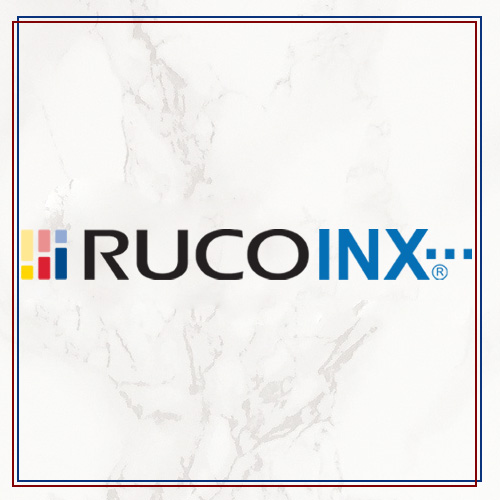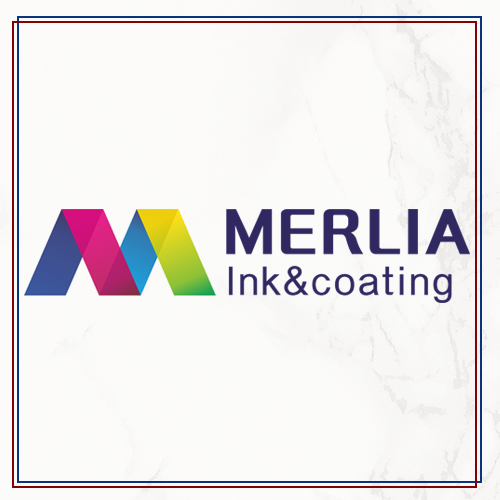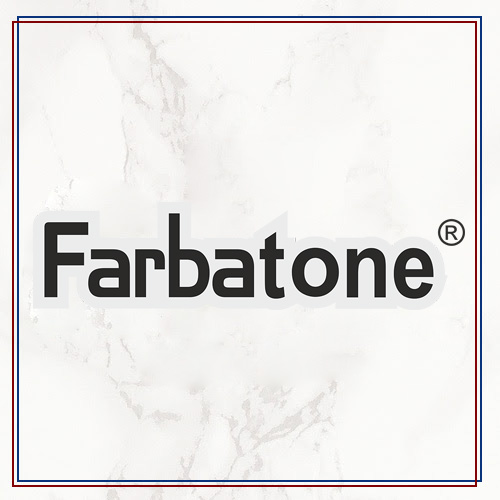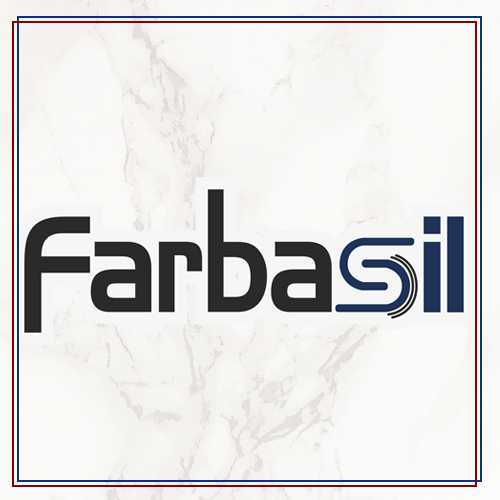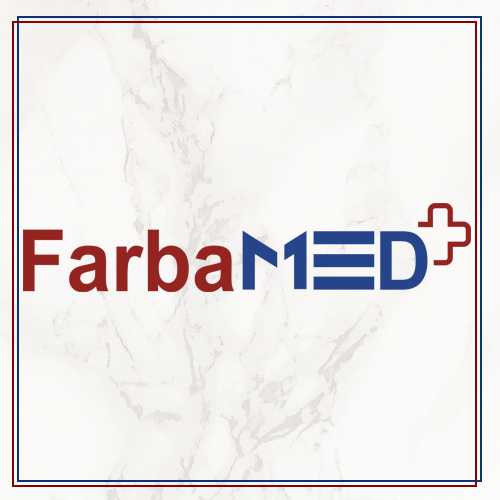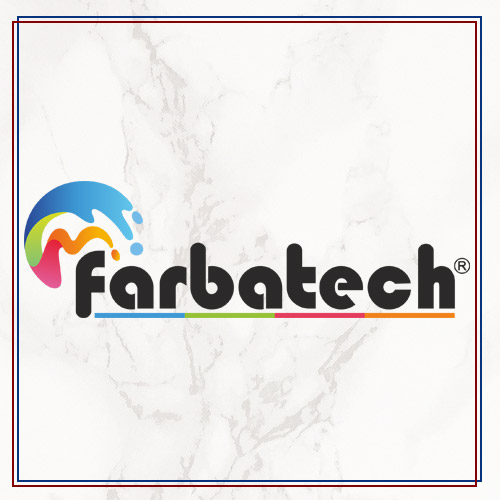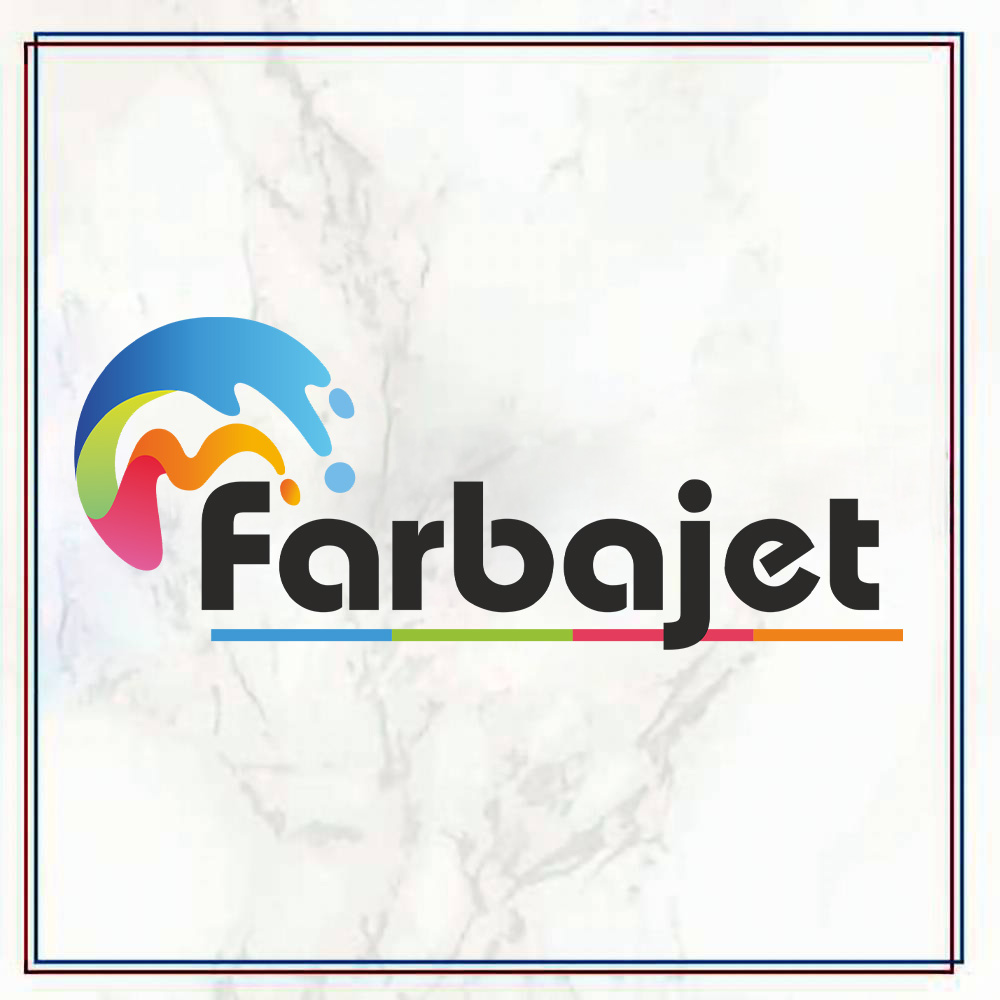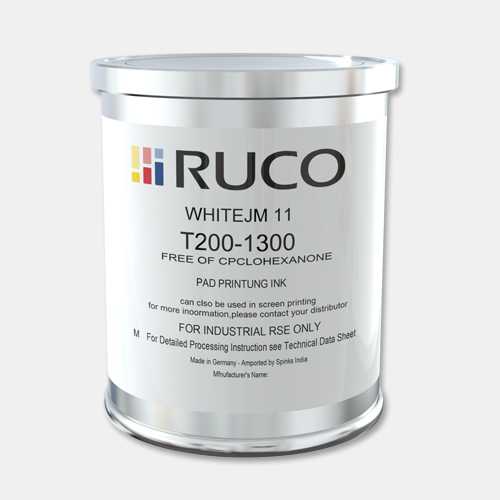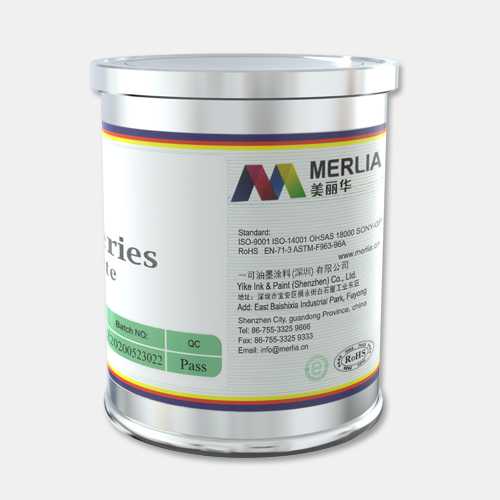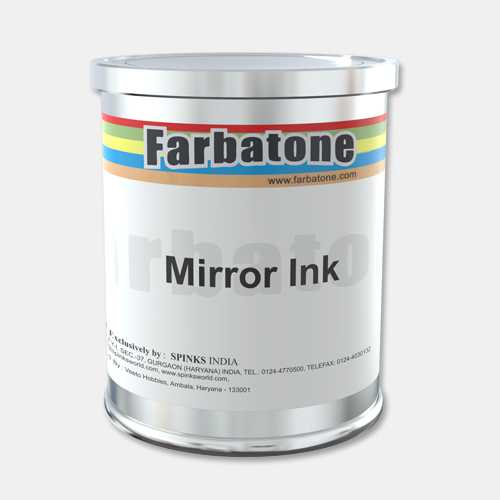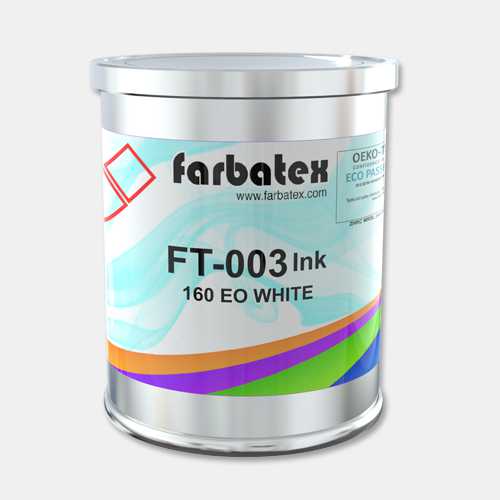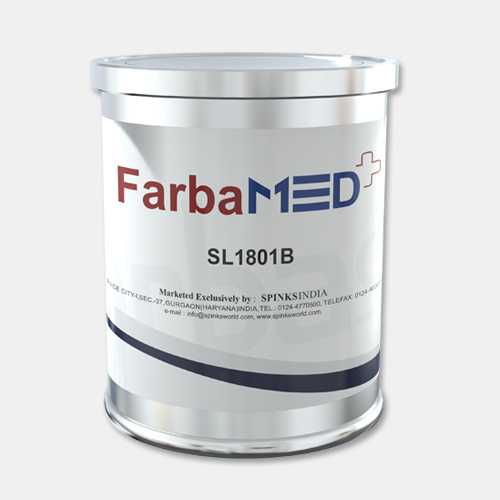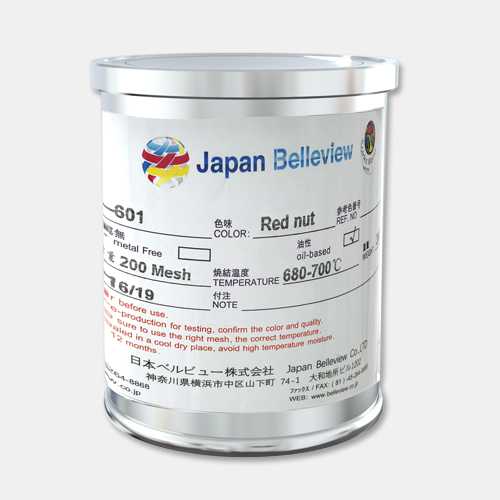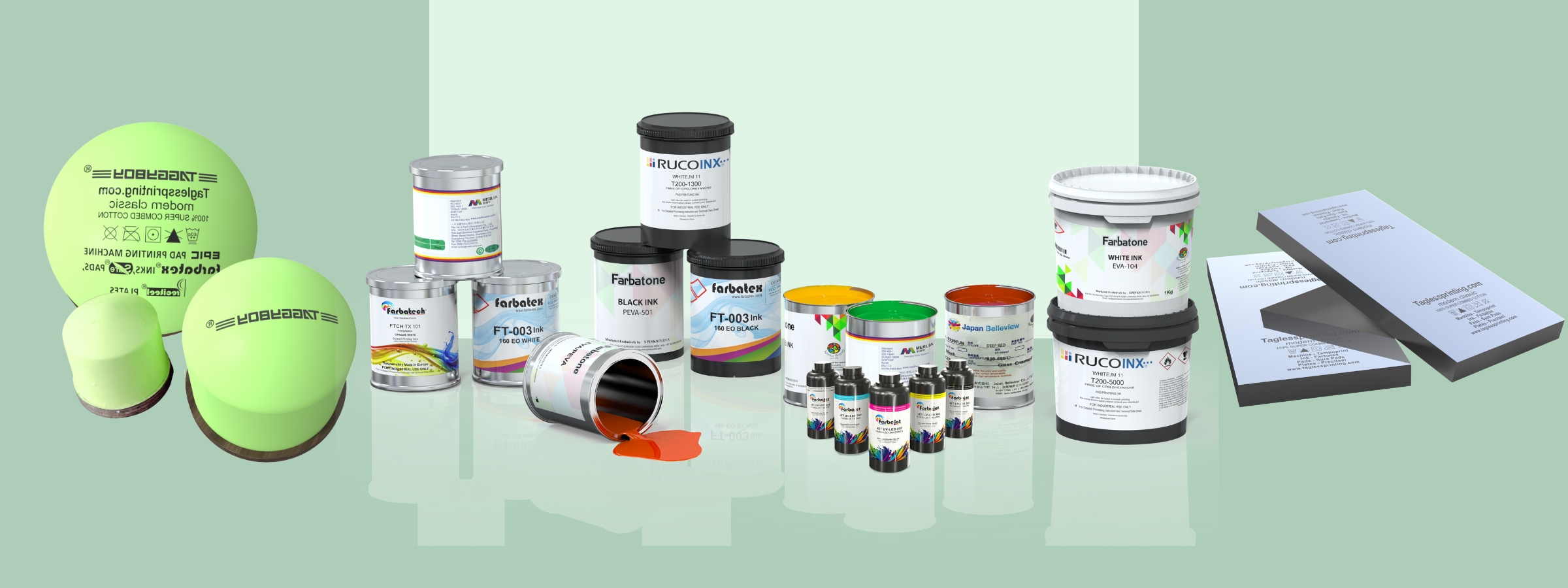
Merlia
Manufacturer of Printing Inks, Screen Printing Ink, Pad Printing Ink, UV Varnish, UV Paint, Conductive inks
Farbatone
Specially formulated inks for footwear, automotive, medical, glass and many more industrial printing applications.
Farbatex
Highly specialised , Oeko tex certified inks for screen and pad printing for tagless printing and many other applications.
Farbasil
Silicone based pad & screen printing for promotional products, apparels, swimming caps and other silicone products.
Farbatech
These inks, coatings, paints, and colors are totally sourced from top manufacturers in European countries....These inks are available in a wide range of colors and provide efficient printing, excellent adhesion and can be used for pad printing, screen printing and spray coating.read more
Screen printing & Pad printing inks
Current printing standards request adaptable top-notch arrangements. We provide organic/inorganic colors/inks/paints/coating and shade arrangements for pad printing, screen printing(Screen printing inks/paints/coatings), UV screen printing (Uv Screen printing inks/paints/coatings), flexo printing(Flexo printing inks), labeling, and packaging applications that are ideal for solvent or water-based inks, UV-based inks, PU based inks, Acrylic-based inks, and polyester-based inks. Printing ink is a liquid or paste that contains pigments or dyes and is used to color a surface to produce an image, text, or design. Inks find use in almost every aspect of human activity. It is made of resin and pigment. Most of the time it is a necessity to add a type of medium, for instance, thinner with the ink. Printing inks are selected based on the substrate it must be printed on. Our printing inks are used to print cosmetic items, toys, mobile phone keypads, glasses, ceramics, metal, thermosets, promotional items, to name a few which are indispensable in our daily life.
Printing Inks/Paints/Coatings and Technology Applied to All Types of Plastic, Metals and Glass
Pad Printing Inks for Plastics and Metals
In pad printing, an image is transferred via a soft silicone pad onto the surface to be printed. The silicone pad or pad then lift the ink from the etched image and transfer it to the surface. Pad printing (also called tomography) is a printing process that can transfer a 2-D image onto a 3-D object. This is accomplished using an indirect offset (gravure) printing process that involves an image being transferred from the cliché/plate via a silicone rubber pad onto a substrate. Pad printing is used for printing on otherwise difficult to print on products in many industries including medical, automotive, promotional, apparel, electronics, appliances, sports equipment, and toys. It can also be used to deposit functional materials such as conductive inks, adhesives, dyes, lubricants, and even food products like chocolates, edible colors, etc.
| READ MORE ON PAD PRINTING INKS AND APPLICATIONS: Click Now |
|---|
UV Screen printing inks on Cosmetic glass containers, Labels, Glass bottles, Plastics & Cosmetic tubes
It refers to a commercial printing process that uses ultraviolet curing technology. The UV printing process involves special inks that have been formulated to dry/cure quickly when exposed to UV light.
Screen printing inks for plastic; PP, PE, PET, Acrylic, Nylon, PVC, ABS
Screen printing uses a fine material/mesh to transfer an image to another material. The mesh is stretched to create a screen and inkTwo-Component is pressed against the mesh in order to successfully print the image. Actually, all pad printing inks can be used for screen printing as well by just adding the retarder instead of Thinner.
It is a technique where a mesh is used to transfer the ink onto the substrate with the help of a blade and squeeze.
Offset printing (Lithography)
In this process, a printing plate, made up of Al, has an image of the content that needs to be printed. When the plate is inked, only the image area holds the ink and transfer the image from the plate to the rubber blanket and then to the printing surface or substrate.
Flexography
In flexo printing, the content to be printed is on the relief of a printing plate which is made up of rubber. This plate is inked, then that inked image is transferred to the substrate. It is mainly used for the label and packaging industries.
Gravure printing
In this printing, the image to be printed is engraved into a printing cylinder. The cylinder is inked and this ink transfers the image to the substrate.
Types of Inks applied on Various plastics: PP, PE, PET, Acrylic, Nylon, PVC, ABS
Solvent-based inks are predominant in the pad-printing industry. They dry very rapidly through solvent evaporation alone. Care must be taken when printing non-absorbent materials with these inks, as absorbency is required to give the best adhesion. They are available in gloss and matte finishes and perform particularly well with various thermoplastic substrates. A simple way to tell if a solvent-based ink is suitable for a particular plastic is to rub the solvent, used to dilute the ink, onto the substrate. If the solvent melts the surface of the plastic, chances are the ink will adhere very well.
In Oxidation-drying inks, the resin absorbs oxygen from the atmosphere and undergoes a polymerization process, producing a very tough, flexible, weather-resistant ink film. They have limited uses in pad-printing applications due to their slow drying speed, but they are excellent for printing onto metal and glass.
Two-part or Reactive (catalyst curing) inks, used extensively in pad printing, also contain resins capable of polymerization. However, the required catalyst is either blended into the ink by the manufacturer or supplied separately and mixed in by the printer when required. Either way, these inks have a restricted shelf life once the catalyst is added.
Two-part inks cure very rapidly when heated. They are generally printed on difficult substrates such as metals, some plastics, and glass. They are particularly preferred when good chemical and abrasion resistance is required. Care must be taken when mixing the base ink with the catalyst. Manufacturers specify an exact weight to be added, so you must always weigh the components when mixing - no exceptions! Inaccurate mixing can give inconsistent adhesion and product-resistance characteristics.
Another important factor to be aware of with two-component inks is that after printing and prior to complete curing, the temperature of the printed ink film must not drop below 59°F (15°C). Should this occur, the ink will cease curing and cannot be restarted. This may not be a problem if the curing may nearly be complete. However, if curing takes place in storage over a period of time, the ink film becomes vulnerable. A dry ink film is not necessarily cured. It takes time, temperature, or a combination of both to affect a complete cure. With two-component inks, curing typically takes five days at 68°F (20°C) or 10 min at 212°F (100°C). This information is available on the ink's technical data sheet, which, unfortunately, most users do not bother to read.
Baking inks need a certain minimum temperature and time to cure. The cure time varies inversely with the temperature: the higher the temperature, the shorter the drying time. The flexibility of the ink film is another factor to consider with these inks. Ink films that must retain their flexibility require lower temperatures, for a higher temperature can cause brittleness.
Sublimation inks involve a special process where a solid turns into a gas when heated. When these inks are applied to an appropriate surface and then heated to the specified temperature (approximately 392°F or 200°C), dyes in the ink sublime, the surface of the material becomes porous, and the dyes pass into the material. This changes the color of the base material. Once the material has cooled, the ink is sealed into the surface. Pad printing is a suitable process for sublimation since the ink deposit must be kept to a minimum to prevent color bleeding. Applications include keyboards and other areas where abrasion resistance is critical. Care must be taken when selecting colors, as certain inks are sensitive to UV light and fade very quickly. The range of colors is very limited, and matching Pantone colors is almost impossible. Another limitation is that the substrate color must be lighter than that of the ink.
Ceramic and gas thermoplastic inks are used quite successfully in the pad-printing industry. These inks are similar to the ones used in screen printing in that, at ambient temperatures, the ink is solid (like candle wax). It becomes fluid when raised to 176°F (80°C), which is accomplished in the ink reservoir and cliché.
| READ MORE ON SCREEN PRINTING INKS AND APPLICATIONS: Click Now |
|---|
